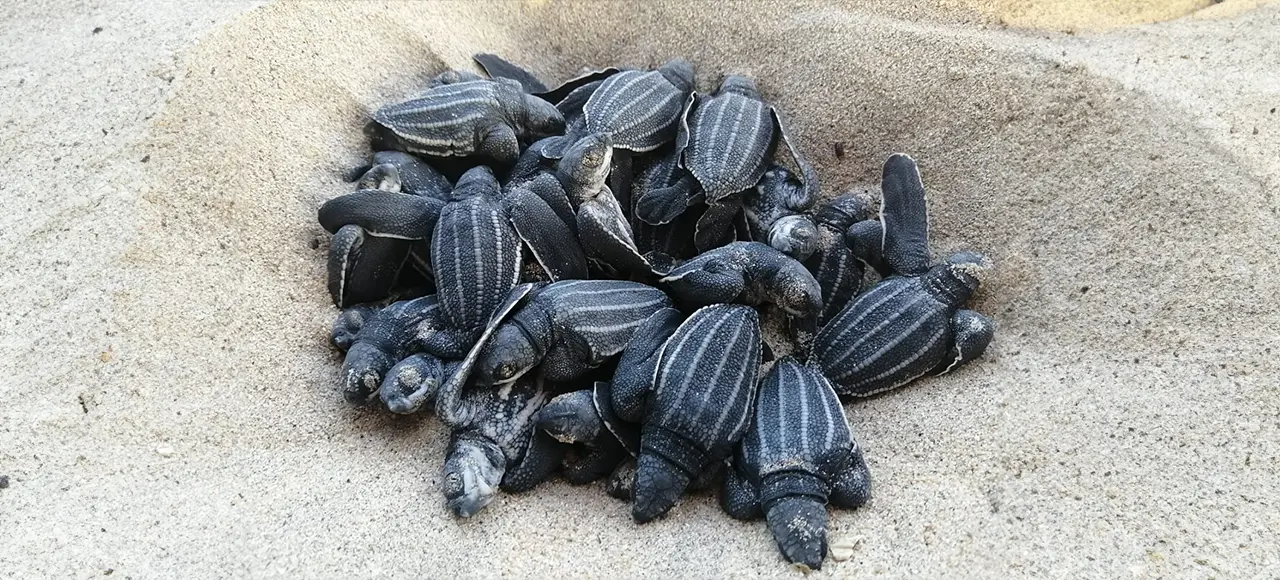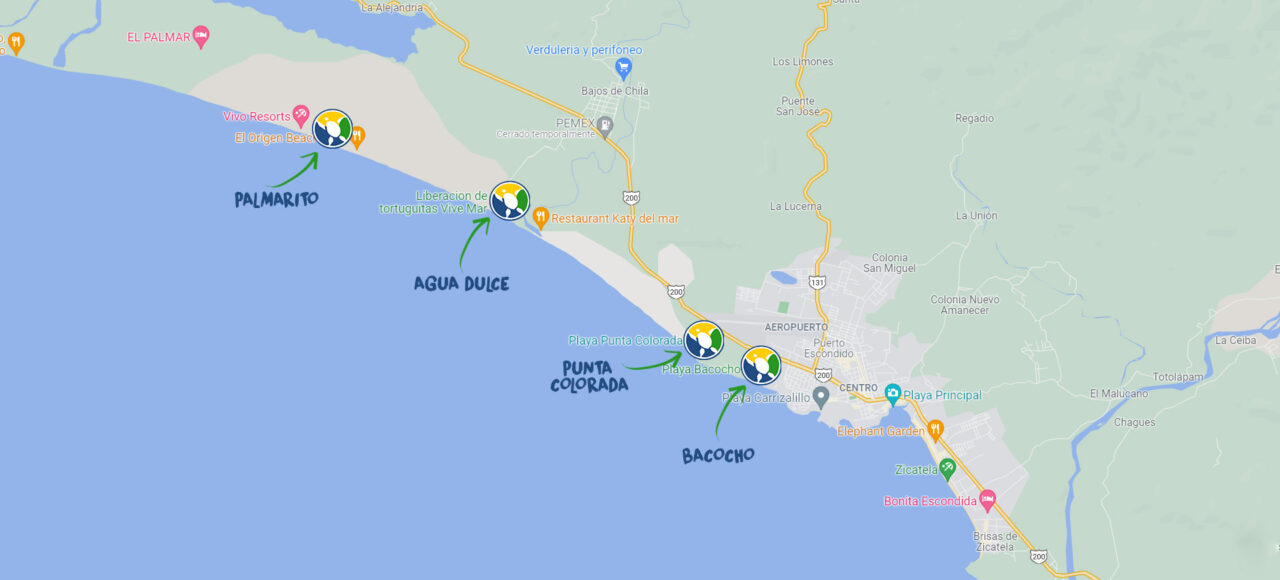
VIVEMAR is a non-governmental organization that does not belong to any government or private institution, so the resources needed to support all the projects we develop come from regenerative tourism that supports us through the observation of the release of sea turtles into the ocean, through our volunteer program, nest adoptions and donations.
The projects that we develop with your support through the release of sea turtles and the volunteer program are the following:
An important fact that you should know is that VIVEMAR protects 27 km of coast, being this the project with the largest protected coastal extension in Puerto Escondido and at the same time one of the most outstanding conservation and protection projects in Mexico and the world.
VIVEMAR, due to its large protected coastal extension, has 4 incubation pens which are located at strategic points of the 27 km that we protect (see the map at the bottom of this text). WE HAVE THE PRESENCE OF TURTLES ALL YEAR ROUND.
THE TURTLES WE PROTECT ARE:
olive ridley Lepidochelys olivacea, present all year round, in vulnerable conservation status.
GREEN TURTLE Chelonia mydas, present all year round, in danger of extinction.
leatherback Dermochelys coriacea, present from October to March, in CRITICAL DANGER OF EXTINCTION.
hawksbill Eretmochelys imbricata, present from July to October in very low density, in CRITICAL DANGER OF EXTINCTION.
Every day of the year we protect nests, our record number being 72 nests in one night in high season (October – April), a nest can have up to 150 eggs, and we can protect at least 3 to 5 nests in low season (April – October).
We release them at different points on the beach at different times of the day, the turtles can be born during the day or at night, of the 100% of the turtles that hatch, that is, that emerge from the nest, 85% are released in the absence of tourism at different points on the beach and these are released as soon as they are born from the nest, either at night or during the day, the other 15% we release with tourism, in turn allocating the nest cleaning hatchlings (hatches that do not manage to emerge on their own) giving them a second chance at life.
The species that we release with tourism are Olive and Verde, the hatchlings of leatherback and hawksbill being a species in critical danger of extinction are released by the team’s technicians with the help of our volunteers under more rigorous standards that ensure greater survival, remember that the turtle release activity is carried out in order to raise funds to support the project and we always do it in the most ethical and respectful way possible for the turtles.
We have high season (October – April) defined as months with a greater presence of turtles and protected nests and low season (April – October) as months with less presence of turtles and protected nests, that is why the release activities vary in these months, that is, in high season given the greater presence the tourist has the opportunity to release a turtle on their own and in low season they are released as a group.
It is important to mention that in high season from November to February we have the seagull season, which visit the coast for food, this season is a natural phenomenon which we cannot avoid, but we can take preventive measures so that tourism has a rewarding experience, the measures may vary and these will be provided to you in the environmental talk prior to your release so you must be very attentive.
WHY DO WE PROTECT SEA TURTLES?
RECOMMENDATIONS:
Remember that when you do the experience with us you are supporting a conservation project that works on multiple tasks to maintain the ecological balance on the coast, your support helps contribute in many ways, (transparency Link)
WHAT SHOULD I DO IF I WANT TO GO TO THE RELEASE OF THE BABY CHILDREN INTO THE OCEAN?
1- READ ALL THE PREVIOUSLY MENTIONED INFORMATION
2- Select the incubation pen where you want to go to do the release activity, if you want additional information call the camp leader directly at the number described at each camp.
👉🏼Bacocho https://maps.app.goo.gl/uE5Ln98RN4amvprX6?g_st=ic (BEACH WITH THE GREATEST TOURIST AFFLUENCE)
📲 +52 954 544 1330
✅To release in Bacocho you do not need a reservation, just arrive directly to the beach at 4:30 pm.
👉🏼Agua Dulce https://maps.app.goo.gl/z1L84mrQf5XW93qg9?g_st=ic (RELEASE WITH SMALL GROUPS)
📲 +52 954 126 9558
✅To release in Agua Dulce please call to make a reservation.
4- The contribution is $200 Mexican pesos per person in high season (October – April), in low season it is vital that you call the camp leaders at the numbers mentioned in point 2 of this list so that they can give you more information about the dynamics of release and contribution. The contribution is made in cash directly at the incubation HATCHERY.
5- Our release costs are transparent, so we recommend that you do not be fooled by people who try to sell you the release at high costs, get information directly by calling the numbers described in point 2 of this list and on our official website and/or social networks.
We appreciate all your support! And for getting here and reading all the information, remember! TOGETHER WE RECOVER THE OCEAN AND THE LAND!
